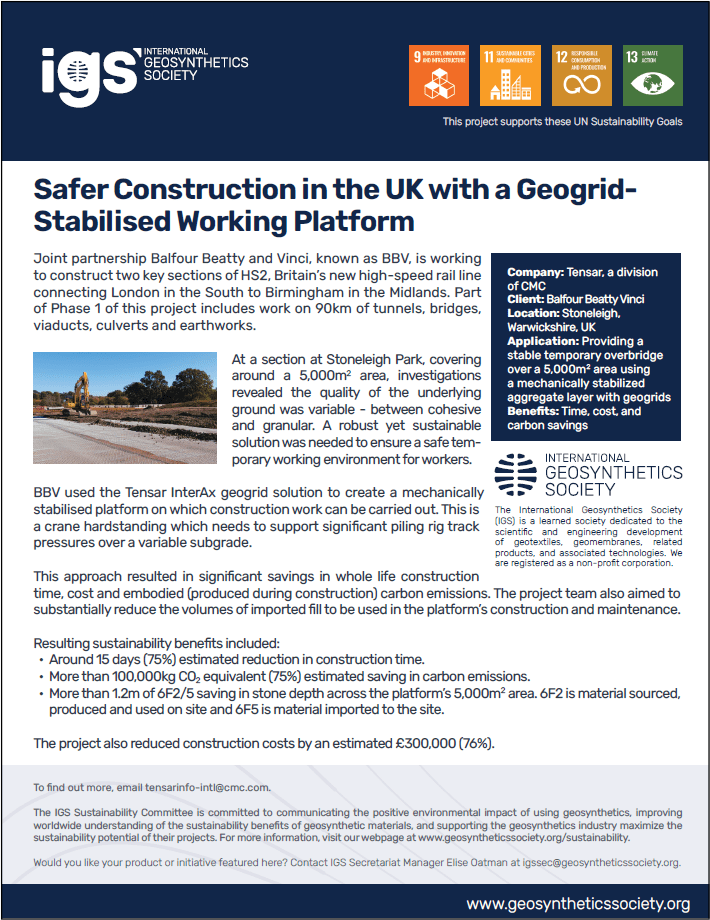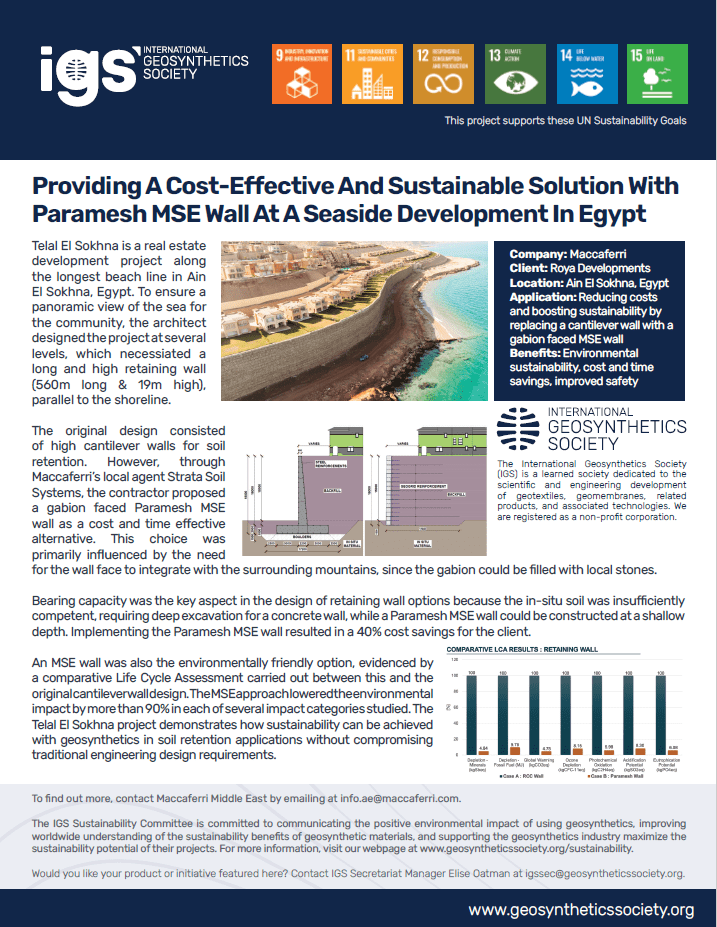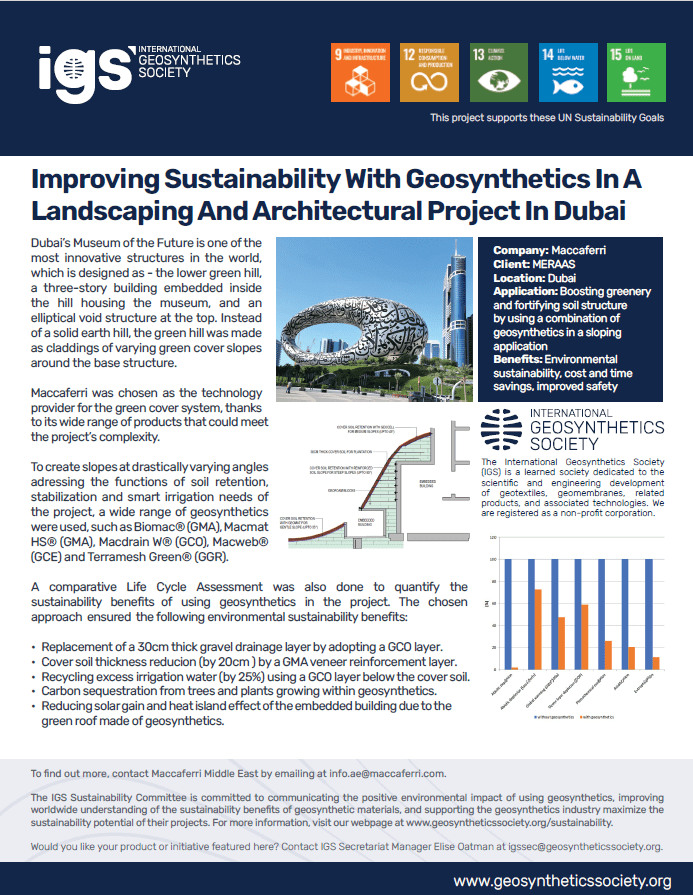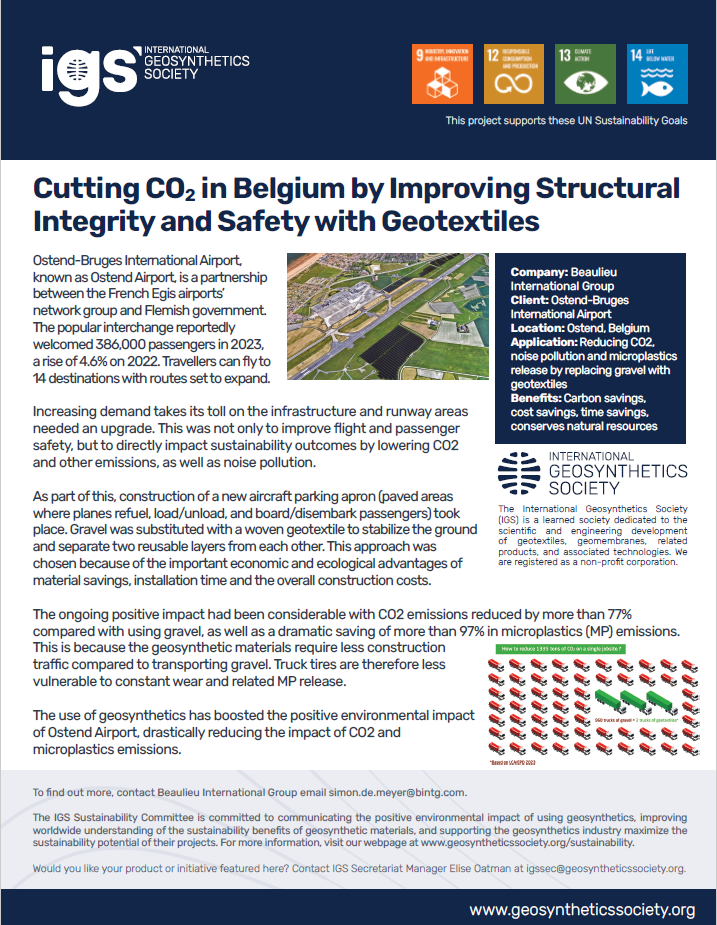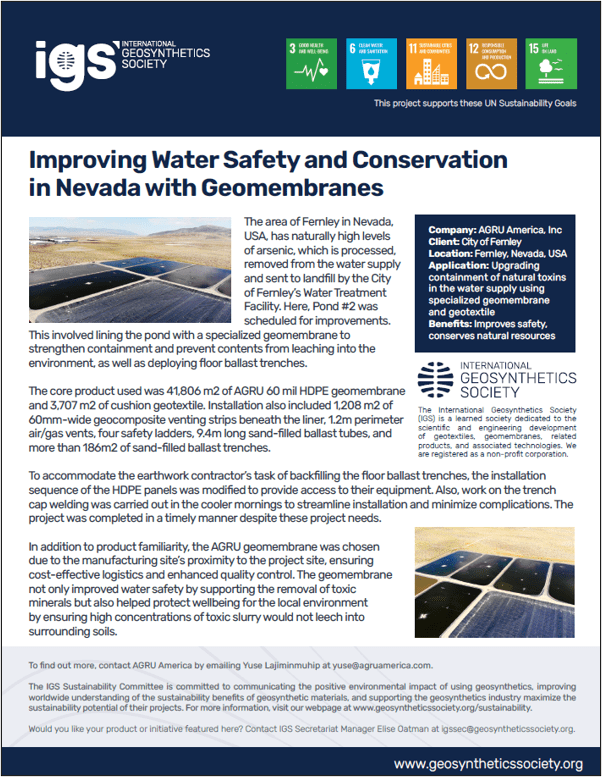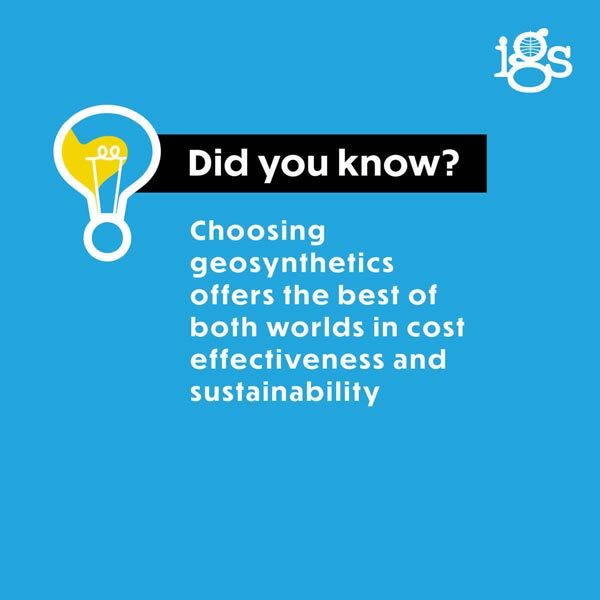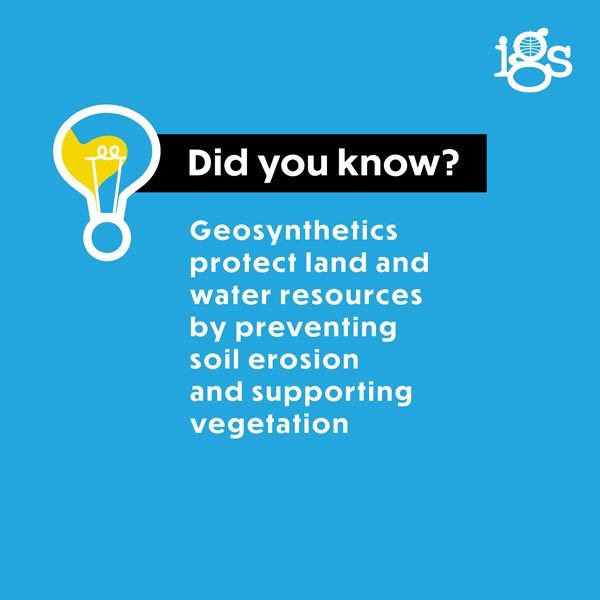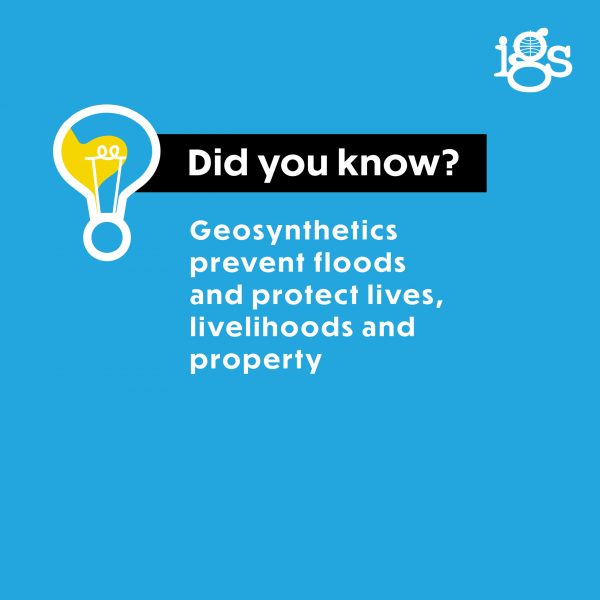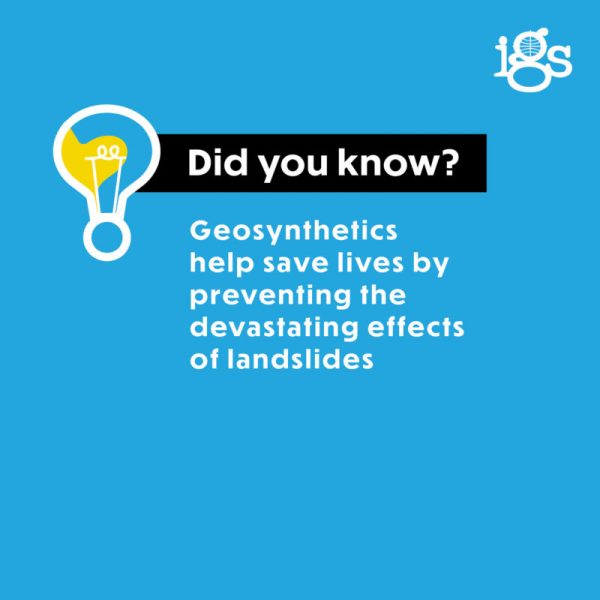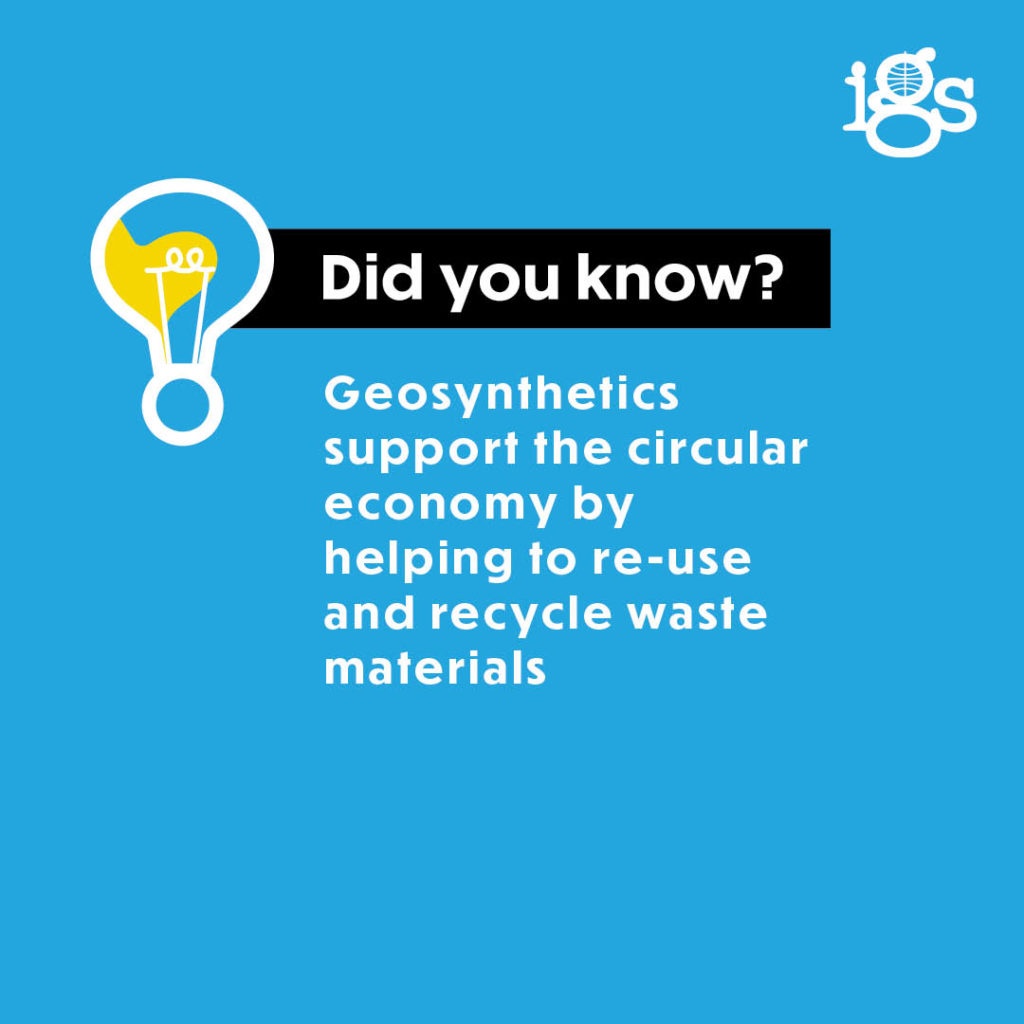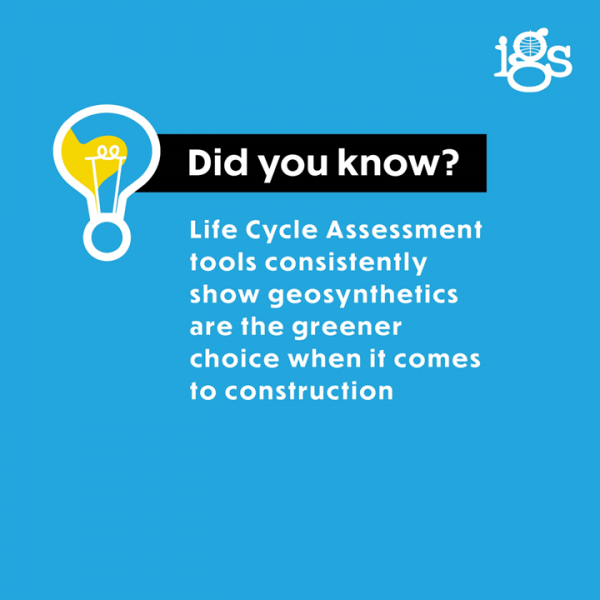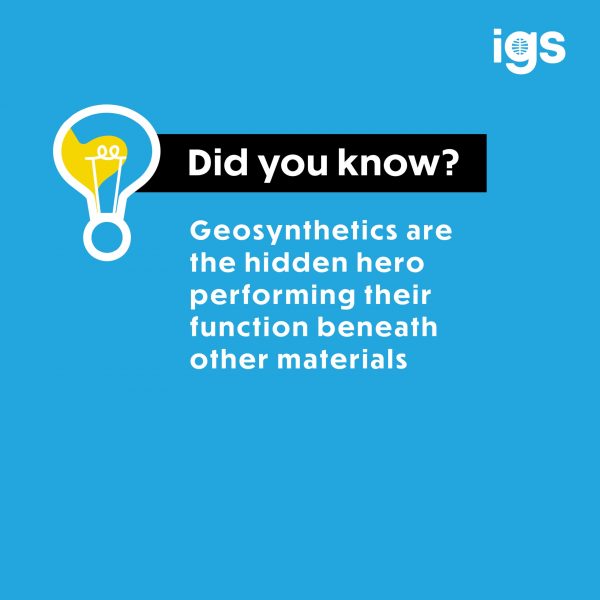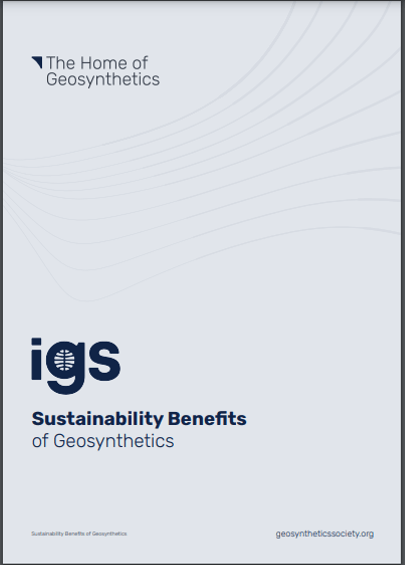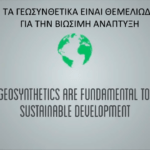Geosynthetics make infrastructure more sustainable. They extend the service life of roads, reduce the use of aggregates, conserve and protect water, minimize land disturbance and control soil erosion.
Sustainability is at the heart of what we do. IGS publications, events, lectures and research highlight the many ways that geosynthetics contribute to the Sustainable Development Goals.
Follow the tutorial series of how to set up your calculator account, review example projects, set up your own projects, and much more.
VIEW THE TUTORIALS (YouTube)
VIEW ALL IGS SUSTAINABILITY VIDEOS (YouTube)
IGS Sustainability Statement
The International Geosynthetics Society believes that geosynthetics and associated technologies make a significant contribution to the achievement of sustainable development.
The IGS is committed to complying with applicable legislation and maximizing the positive sustainability contribution of geosynthetics, while minimizing the environmental impacts of our operations, including events organized or endorsed by the Society.
We will engage with, and communicate to, our employees, members, suppliers, and other stakeholders on the importance of sustainable practices. We will support them in improving their own sustainability performance. In order to lead by example, we will regularly report on our environmental performance against the objectives and targets we set, and we will seek to continually improve.
Read the full statement here. [PDF]
As the International Geosynthetics Society (IGS) celebrated its 40th anniversary, David Shercliff and Kasia Zamara discussed 40 years of sustainability-related projects and influence in geosynthetics (November 6 – 10, 2023)
View All Case Studies:
- Geotextile Offers Sustainable Construction At Nature Site (Naue) [PDF]
- Optimizing District Heating Through Pit
Thermal Energy Storage In Denmark (AGRU) [PDF] - Greener Solution To Containing Coal Mining By-Product In New Zealand (Axter Coletanche) [PDF]
- Cleaning Up Communities With HDPE in Shepperton (Fabtech Australia) [PDF]
- Stabilization Of Levees In The Greater New Orleans Area (Solmax) [PDF]
Paper prepared by Nathalie Touze from
Université Paris-Saclay, INRAE, France
Paper prepared by Francesco Fontana, Manifattura Fontana SpA, Valbrenta, Italia
Paper prepared by John Kraus, Executive Director of the IGS, United Kingdom
Spotlight on Sustainable Solutions
Did You Know…?
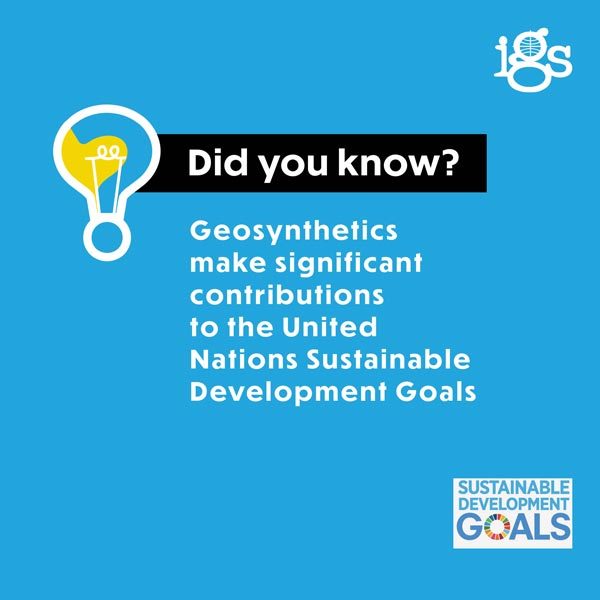
Geosynthetics make significant contributions to the United Nations Sustainable Development Goals. [PDF]
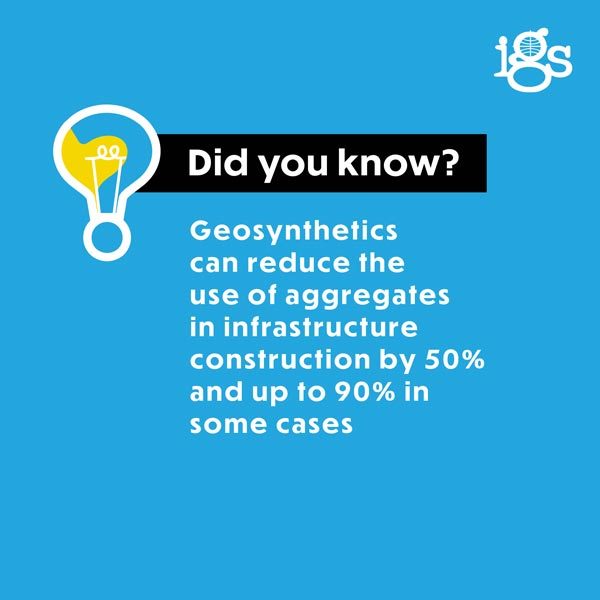
Geosynthetics can reduce the use of aggregates in infrastructure construction by 50% and up to 90% in some cases. [PDF]
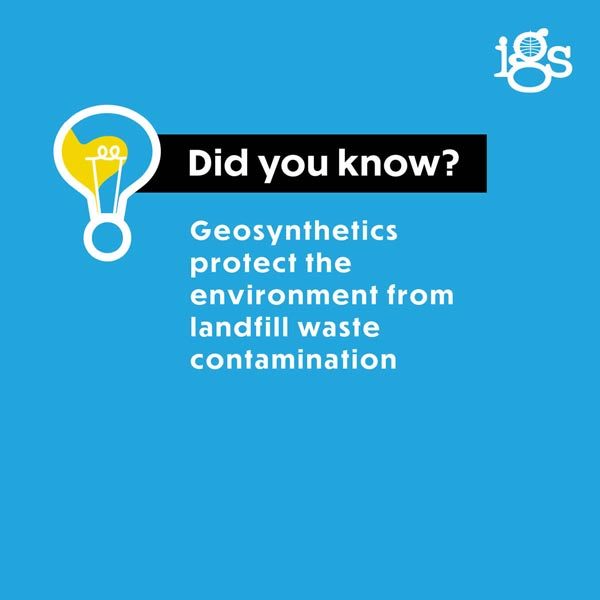
Geosynthetics protect the environment from landfill waste contamination. [PDF]
The IGS has called on the European Commission to fully understand the enormous sustainability benefits of geosynthetics when considering how to reduce microplastics in the environment. This important issue must be addressed using the best available scientific data and case studies. The Commission should recognise that geosynthetics are part of the solution. Read our press release and our response to the Commission’s consultation.
Website
Sustainability News
- February 4, 2025
- December 4, 2024
- September 20, 2024
- September 4, 2024
IGS Sustainability Committee
If you would like to participate with the IGS Sustainability Committee, please contact us!
Sustainability Case Study Submission
Do you have a sustainability-related case history to share? Let us know!


